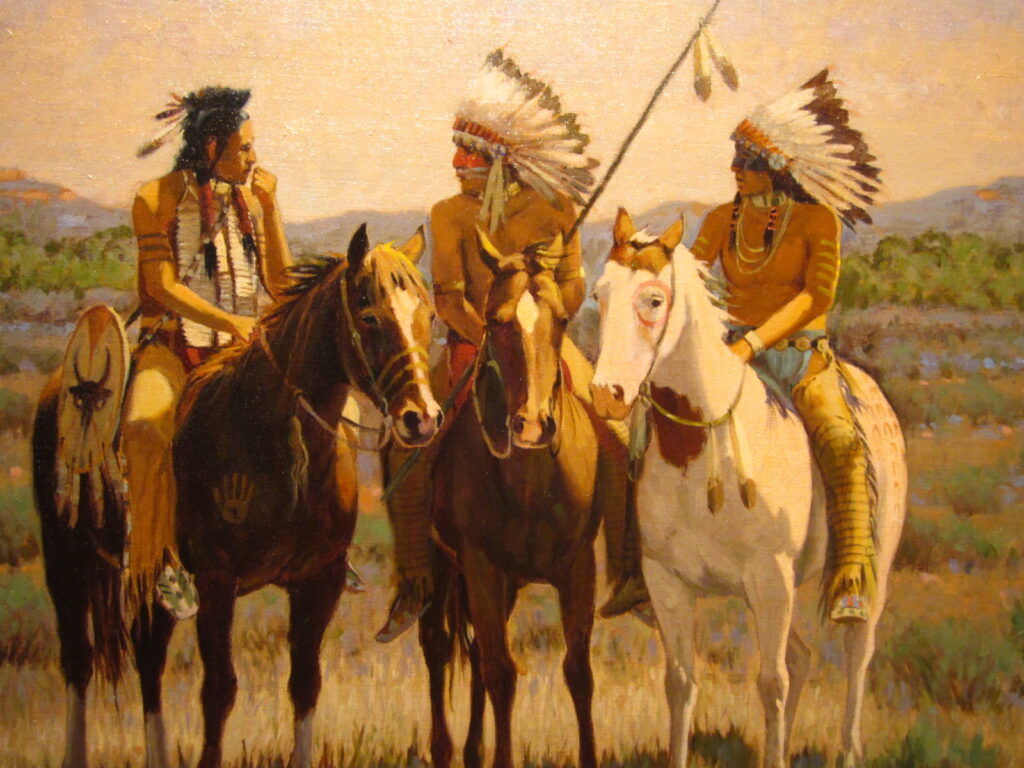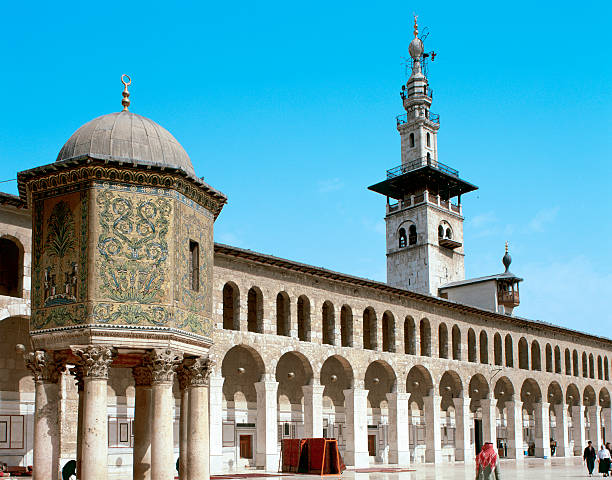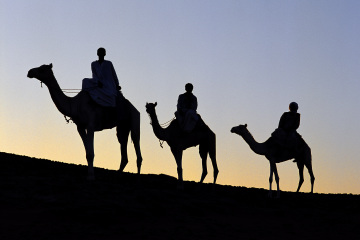Course Content
The History course 2023 has now ENDED.
Start date: Weds
Length: 26 lessons, every Weds 7.30 – 9.30 pm (breaks during school holidays & Ramadan)
Venue: ONLINE ONLY
Instructor: Shaykh Dr Ridhwan ibn Saleem, Senior Lecturer at LCI. Guest lecturers include
Fees: Pay What You Want (normal fee £220)
At LCI, we want our courses to be accessible for everyone. For that reason, we have decided to waive our course fees altogether, and allow students to Pay What You Want (minimum small registration fee).
We hope that this will allow all genuine seekers of knowledge to connect to our highly-qualified teachers and benefit from their company and knowledge.
Course description
The Civilisations History Initiative is based on presenting the intertwined history of the Islamicate and Western civilisations, from their inception in the Early Middle Ages up to the present time.
We aim to highlight the rich heritage that links both great civilisations throughout their history, as well as to debunk many of the myths and misconceptions that have arisen over the centuries, and to provide an alternative to the prevailing Eurocentric telling of history.
The main project of the Initiative has been the popular Civilisations History Course – A Story of Two Civilisations – which has run in Hounslow (2016-17), High Wycombe (2017-18), and Woking (2018-19). Read past student testimonials.

Course structure
The course focuses on a broad sweep of the major historical personalities, events and processes of the Islamic (622-1707) and European (1707-present) Ages. The Islamic Age, or Islamic Millennium, is further divided into 3 major periods: (1) the High Caliphate Period (622-1066), in which most of the Muslim world is united under one caliph who commands the greatest empire in the world; (2) the Middle Period (1066-1500) of Islamic sultanates, emirates and khanates, in which myriad polities and dynasties come and go but which form the “Muslim Commonwealth” united by a common language, religion and culture; and (3) the Gunpowder Period (1500-1707), dominated by the emergence three great empires in the Muslim world, the Ottoman, Mughal and Safavid, which continue Muslim global pre-eminence, while Western Europe is undergoing its Renaissance, Reformation and Age of Discovery.
The final period, the European Age, (1707- present), witnesses the gradual rise of the European colonial empires which come to dominate most of the world by the end of the nineteenth century. Following the momentous and self-destructive power struggles between these colonial powers in the 20th century – the two World Wars – the mantle of Western civilization is taken on by the new world superpower, the United States of America, which proceeds to fashion a new global order under its direction.
The passage of ages, empires, dynasties and the later emergence of nation-states will be studied in relation to the world situation as a whole, and with particular regard to three inter-related aspects: political-military, intellectual and the economic.

Civilizations History course outline
| LESSON | |
| TERM 1 – INTRODUCTION AND OVERVIEW | |
| 1 | Introduction |
| 2 | The writing of history |
| 3 | Overview of the period: 622-2000 |
| TERM 2 – EARLY HIGH CALIPHATE PERIOD – PROPHETIC AND RASHIDUN PERIODS | |
| 4 | The Advent of Islam |
| 5 | Rashidun Period (632-661) 1 | Abu Bakr |
| 6 | Rashidun period 2 | Umar |
| 7 | Rashidun period 3 | Uthman |
| 8 | Rashidun period 4 | Ali |
| TERM 3 – THE ISLAMIC MILLENIUM (AGE OF ISLAMICATE CIVLIZATION) | |
| 9 | High Caliphate period 1 | Umayyads & Abbasids |
| 10 | High Caliphate period 2 | Harun Rashid and Baghdad |
| 11 | High Caliphate period 3 | Barbarian kingdoms & Vikings |
| 12 | High Caliphate period 4 | Bayt al Hikma & intellectual fluorescence in Muslim world |
| 13 | Middle period 1 | Normans, Crusaders & the Turks |
| 14 | Middle period 2 | Intellectual trends of the Middle period |
| 15 | Middle period 3 | The Mongol expansion |
| 16 | Middle period 3 | some notable personalities of the Middle period |
| 17 | The Gunpowder period 1 | Europe and the Ottomans |
| 18 | The Gunpowder period 2 | The Mughals (Sh Jawad) |
| TERM 4 – THE EUROPEAN AGE | |
| 19 | Intellectual trends in the European Age |
| 20 | 18th century: The European Enlightenment |
| 21 | 18th – 19th century: Revolutions and European world empires |
| 22 | 19th century: “Excuse us please, we’re British!” |
| 23 | Economies of the Muslim and western worlds, and the rise of capitalism |
| 24 | Early 20th century: the World Wars |
| 25 | Late 20th century: Cold war and American empire |
| 26 | Final class – review of the period 622-2000 |
If we do not know where we came from, we do not know who we are. It is hoped that this course will help connect us to our forefathers because, after all, it is their story that we are telling.

Did you know?
Did you know that the Caliph Harun Rashid ruled over an empire that was almost twice the size of the Roman empire at its height?
Did you know that the great city of Baghdad, the capital of the Abbasid empire, had a population of one million citizens while the largest cities in Western Europe at that time had only about 40,000?
Did you know that all major Muslim cities during the Middle Ages had hospitals funded by wealthy patrons and endowments, which were open to all and provided free healthcare?
Did you know that while peasants in Western Europe in the Middle Ages toiled under the virtual slavery of serfdom, peasants in the Muslim world were free men and women with rights to justice, property and movement?
Did you know that non=Muslim communities living under Muslim empires of the past were allowed to follow their own religion, customs and laws, including drinking wine and eating pork?
Did you know that the philosophical writings of Muslim scholar, Ibn Rushd, were translated into Latin and spread through Europe in the 12th and 13th centuries leading to a rationalist movement?
Did you know that Mughal emperor, Shah Jahan, was probably the richest man in the world of his time, and that he had the Taj Mahal, which is considered by many to be the greatest architectural work existing today, built in memory of his beloved wife?
These are just small glimpses of our proud and rich heritage which spanned over a thousand years in which the Islamicate civilization dominated and led the world in learning, art and culture.
Relevance
The Civilizations History course has been developed in response to a perceived pressing need and a major gap in the English-medium syllabuses of our Muslim madrassas and schools in the UK. The aim is to empower Muslims with the knowledge of where we have come from, what our forefathers did before us, and where we are now. This knowledge will enable us, God willing, to embrace our heritage, understand our situation, and inform our responses to the challenges facing our ummah.
Re-reading history
We believe that the true reality of events can only be fully known when examined through the lens of revelation and a Quranic worldview. During this course, we unapologetically re-read and re-examine the received history that we find in many western textbooks, and challenge many Euro-centric biases and distortions that have inevitably crept in especially since the time of colonial domination. This unique course has the lofty ambition to re-name, re-claim and re-tell our history.
Then it is up to the intelligent student to decide which version corresponds closer to reality.
Past student testimonials
Enrol Now – Pay What You Want

A Story of Two Civilisations:
Islam and the West
Almost 1,500 years ago, an honest Arab trader from a small desert town sat in a contemplative retreat on a mountain in the sandy wilderness. As he sat, deep in his thoughts, of a sudden he witnessed something extraordinary, something that no-one on earth had experienced for over six hundred years. He came face to face with the Angel of Revelation.
“Read!”
The advent of the Final Prophet signalled that the time of the ancient empires was coming to a close. The long-awaited Apocalypse was imminent. The End of Time (akhir al zaman) had drawn close.
—————
The Prophet sallalahu alaihi wa sallam said, whilst pointing with his index and middle fingers, “The time of my advent and the Hour are like these two fingers.”
———
Verily, a day with your Lord is like a thousand years of your reckoning.
(Quran 22:47)
————-
The final chapter of human history inaugurated by the auspicious appearance and mission of the Messenger of God (may peace and mercy be upon him) was destined to be dominated by two great civilisations: that which emerged in the lands of Islam, and that of Western Christian Europe, later to be known as the West.
The Civilizations History course is a study of these two world civilizations. The syllabus has been carefully crafted to facilitate students to gain an understanding of the history of the Islamic and Western civilizations, and how they interrelate, from the early Middle Ages (advent of the Prophet) up to the end of the 20th century.
Enrol Now – Pay What You Want
Detailed syllabus
| LESSON | TITLE | TOPICS |
| 1 | Introduction | Islamic and European (Western) civilizations Beginnings of human history Geography Ancient Arabian peoples Arabic Language The myth of Europe The Evolution Myth |
| 2 | The writing of history | Examine the historian Euro-centrism Reclaiming our history – “Middle Ages” The Apocalyptic Jesus The Islamic Age 622 – 1707 CE Overview of period 622-2000 |
| 3 | Overview of the period 622 – 2000 | High Caliphate period 622-1066 Prophetic and Rashidun periods High Caliphate period The Middle Period – Age of emirates, sultanates and khanates. Gunpowder Period – Mughals, Safavids & Ottomans European Age |
| 4 | Rashidun Period (632-661) 1 | The Apocalypse | Pre-Islamic world; Ancient empires Pre-Islamic Arabia & Arabic language The Apocalypse Biographical sketch of the Prophet (upon him be mercy and peace) |
| 5 | Rashidun Period 2 | Abu Bakr | Election of Abu Bakr Inaugural address Army of Usamah Virtues of Abu Bakr Wars of Apostasy Gathering of the Quran |
| 6 | Rashidun period 3 | Umar | A note on sources Biographical sketch Virtues of Umar Major events during his caliphate Battle of Yarmouk Battle of Qadisiyyah Conquest of Jerusalem Administration of Umar Appointment of his successor |
| 7 | Rashidun period 4 | Uthman | Biographical sketch Virtues of Uthman Caliphate of Uthman Military conquests Administration Infrastructure Rebellion and martyrdom |
| 8 | Rashidun period 5 | Ali | Biographical sketch Virtues of Ali Caliphate of Ali Khawarij Rebellion and martyrdom The party of Ali Caliphate of Al-Hasan Evaluation of Rashidun period |
| 9 | High Caliphate period (622-1066) | The Umayyads and Abbasids | The Umayyad Caliphs Rise of Abbasid power Sayyid Hussain and Kerbala The idea of the ‘Family of the Prophet’ The Abbasid Caliphs Successor states and Muslim commonwealth period 10th/11th c. Turks/ghilman & Bedouin tribes |
| 10 | High Caliphate period | Harun Rashid & Baghdad | Harun al-Rashid Description and character Courtly life & culture Jihad & cultural exchange with Byzantium The Barmakids – rise and fall Society and life in Baghdad |
| 11 | High Caliphate period 3 | Barbarian Kingdoms & Vikings | Europe during High Caliphate period Barbarian kingdoms Conversion of Barbarians to Christianity Angles & Saxons Viking Age Intellectual trends in Muslim world Economic miracle of Abbasids |
| 12 | High Caliphate period 4 – Bayt al Hikma and intellectual fluorescence in the Muslim world | |
| 13 | Middle period (1066-1500) 1 | Normans, Crusaders & Turks | Normans & The Crusades; Nomads/Bedouins The Turks |
| 14 | Middle period 2 | Intellectual trends in the Middle period | intellectual trends IN MIDDLE PERIOD Rise of Sufi tariqas Unity of Sunni orthodoxy |
| 15 | Middle period 3 | The Mongolian Expansion | Genghis & the Mongols Khanates and conversion to Islam Expansion of Islam Sultan Timur |
| 16 | Middle period 4 – some notable personalities of the Middle period | |
| 17 | Gunpowder empires 1 | European renaissance & Ottoman expansion | Reconquista of Spain and ‘discovery’ of America Europe during the 16th & 17th centuries Reformation, Renaissance & Discovery Scientific revolution Spanish Gold and Silver Mercantilism The ‘Turks’ and Solomon the Magnificent |
| 18 | Gunpowder empires 2 | The Mughals | Muslim history in India Legacy of the Mughals Aurungzeb – misrepresentations |
| 19 | 18th CENTURY: the European Enlightenment | Overview and major events and figures of 18th century Intellectual trends of 18th c.Liberalism, socialism, and science Reform movements of Shah Waliullah and Ibn Abdul-Wahhab Transatlantic slave trade European rivalries |
| 20 | 18th/19th CENTURY 1 | European Empires & revolutions | Political revolutions – American and French revolutions Napoleonic wars Global capitalism & European rivalries in 19thc. Ideas in 19thc. – democracy, nationalism, racism, liberalism/socialism/conservatism |
| 21 | 19TH CENTURY 2 | “Excuse us please – we’re British“ | Muslim response in 19thc. Ottoman tanzimat Jamalud-deen Afghani Pax Brittanica– East India Company and the Opium Wars The White Flood – destruction of native Americans and Australians and settlement of their continents The Scramble for Africa |
| 22 | Medieval economies & the rise of capitalism | |
| 23 | 20TH CENTURY 1 | the World Wars | Overview of 20thc. in 5 slides The world in 1900: European world order WW1 Interwar years WW2 Post WW2 ordering: UN and Bretton Woods 1945 – 1971: the 50s and 60s American Empire |
| 24 | 20th CENTURY 2 | The Cold War and American empire | 1945 – 1971: the 50s and 60s American Empire Children of Israel 1945-1971: Muslim world 1971 – 1991: global capitalism & religious revivals Collapse of Soviet Union The 90s: New World Order |
| 25 | Final class- review of period 622-2000 | Review of the prophetic and Rashidun periods Review of the High Caliphate period Review of the Middle period: the Age of emirates, sultanates and khanates Review of the Gunpowder period Review of the European Age |

